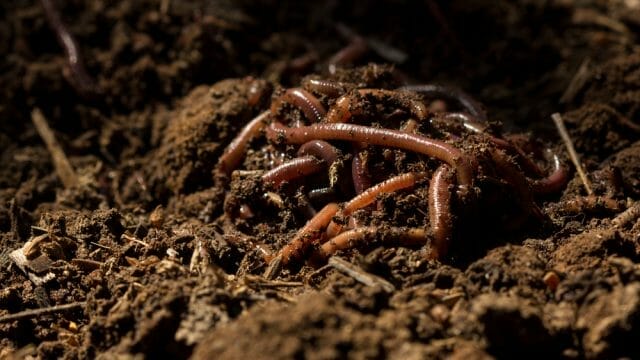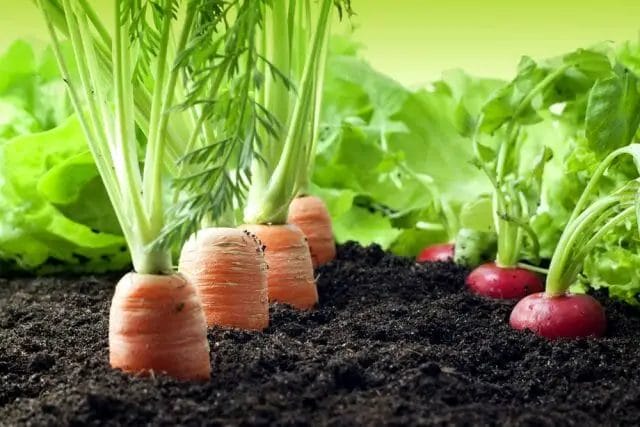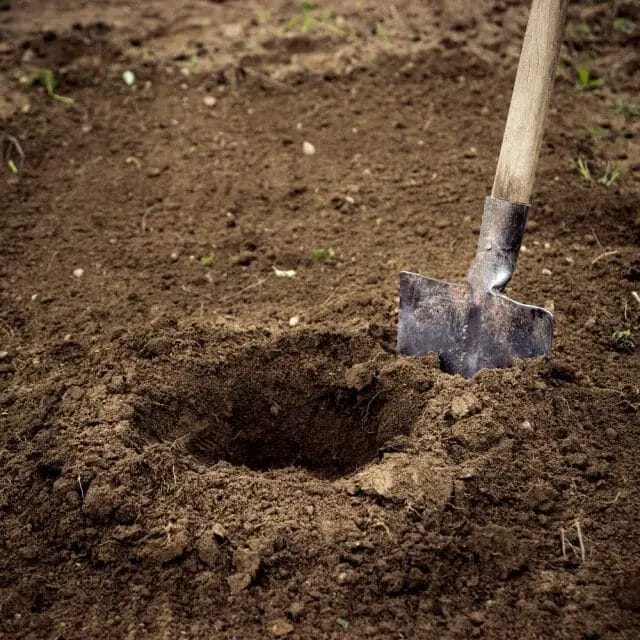An organic farm lover or farmer without tillage opportunity always wants to know how to break up the soil without tilling. If you are one of them, I can promise that this article will benefit all of you.
In this article I am going to explain-
- The processes to break up soil without tilling (organic and non-organic),
- And how to loosen soil without a tiller.
What activities call tillage in your area? You will find different types of arguments among people of other regions. I want to introduce my research about tilling with some words.
Breaking up the Soil Without Tilling

Organic farmers avoid every kind of disruption of soil. Here are some organic ways to break up the ground, obviously without tilling.
You can use one of these ways to improve the soil quality. Hence, the organic process is recommended for improving gardening soil around the house.
1. Growing Earthworm in Soil

You may know earthworms are called nature’s plowman. If you want free labor for breaking up the soil without tilling your land, these invertebrate animals are the only option. It’s an excellent matter.
Earthworms live inside the earth and actively work for the soil. When they move, they have to dig the dirt. Digging and moving, they can cultivate soil up to 3 meters deep from the surface!
They not only break up the soil but also break up dead organic matters. They eat soil, dead roots and leaves of plants, manure, grasses, and all other plant debris. They discharge cast that is very fertile, and this kind of fertilizer is best for organic farms. Their digestive system is fantastic. As a result, the cast of them includes so many organic and mineral nutrients.
For their living, they make tunnels inside the soil. Continuous digging, moving and creating tunnels break up the ground of land in an effective way. So, the drainage system, moisture, and nutrition level of these soil quickly develop.
Earthworms take Oxygen from the soil and emit CO2. The bodies of dead earthworms decompose very fast and become fertilizer of soil.
In the world, more than 3500 species of earthworm. The agronomists have chosen 450 species of earthworm for best output. However, Aporrectodea and Lumbricus are two species of them. FAO has published so many successful stories of using earthworms. So, it would help if you tried to apply it.
2. Planting Carrot and Radish

Another organic way to break up soil is by growing carrots, radish, or other root items. Does it sound hilarious?
Yes, I know. It isn’t easy to root plants to grow in compact soil. But, the people who tried this method got a fantastic result.
Though the root’s size will be small, the nutritious value and taste of no-till carrot and radish are much better than the tilled. The market price is also high.
You can also grow them as cover crops. The fantastic benefit is you don’t have to till soil for growing other crops.
If your opportunity cost is low, you can keep carrots or radish buried in the ground. You have to cut the head of the plant and let them decompose. That will enhance the condition of your soil.
3. Applying Gypsum
Gypsum can be a quick solution to breaking up soil structure without tilling for an organic farm or garden. But keep in mind that all types of gypsum are not allowed to use on the organic farm.
So, how can you find the gypsum that is allowed in organic farming? You can follow the listing of “Organic Minerals Review Institute (OMRI),” “United States Department of Agriculture (USDA),” or any other trusted sources.
If you cannot find a trusted source of gypsum for organic farming or if the gypsum price is unaffordable, you can use bone meal, limestone, compost, elemental sulfur, and so on non-synthetic substances.
However, it is easy to apply gypsum on gardens or farmland. You need to spread the powder on the surface of your garden or field.
It is a remarkably soluble element and will start to work very quickly. It will also work as a good source of Calcium and Sulfur and remove aluminum barriers from the soil.
Gypsum will penetrate the layer and particles of soil. It will create enough slots for air and moisture. Subsequently, the ground will be soft, and the structure will be broken up.
Before applying gypsum, you must study the soil’s requirements and the crops or plant you will grow. The amount of gypsum will be different for different geographic locations and various crops.
If you are not an organic farmer, preferably a low till or minimum tillage farmer, you can apply the following system to break up the soil without tilling.
4. Breaking up soils by plowing
It was mentioned before that, plowing is a form of tilling soil. But, in practical life, farmers say plow as a deep cutting and rotating soil surface.
Where tilling breakups soils into tiny parts, plow breaks up into big pieces. That protects various organic matters of earth.
5. Breaking up the Soil with Harrows
Harrows are agriculture tools to break up the surface soil of farmland. It breaks up grounds to 3 to 5 inches deep from the surface, where tilling does 9 to 11 inches.
That means harrowing irritates soil less than tilling. While harrowing, the layers of soil are not inverted or turned over like that of tilling. That is the significant difference between harrowing and tilling. Three different types of harrows can be used. They are-
- Disk harrows: The cutting edge or blade of this harrow is a metal disk. The soil is just broken up, and the layer of soil remains in its position.
- Spike harrows: Instead of the blade, this harrow contains steel made teeth placed on a horizontal bar.
- Chain harrows: A big chain of spikes is used instead of blades. It loses soil and removes weeds, level up the surface of the land, and so on.
Ways to Loosen Soil without a Tiller

Spade, hoe, and garden fork, and so on tools can help you if you want to break up the soil of pot, rooftop garden, or small scale land. It is effortless to break up the ground as you wish using these tools. Though it is an uphill task, it will not be so hard for a small scale farm.
If the soil of lawns, gardens, and fields becomes compacted, it becomes difficult for the plants to spread roots and absorb necessary nutrients from the ground. Besides, the water of heavy rain cannot be absorbed by these types of compacted soil.
Generally, a tiller is used to loosen the soil. It is mentioned before that tilling is not a good practice for the soil and (micro matters). Let’s discuss how to loosen soil without a tiller.
6. Digging holes and making compost

Previously I discussed three organic ways to break up the soil. They also must be applied for losing ground. Significantly, the earthworm is the best option for losing compact or clay soil and improving it.
Here I want to discuss another method that can fall in the category of minimum tillage. First of all, you need to dig holes near plants, compacted or any infertile areas of garden or land.
Then it would help if you filled up the holes with dead plants, leaves, and any kinds of organic matter. After decomposing, these organic matters will be good fertilizer.
After that, you should spread the compost through the garden. When the component of compost starts mixing with soil, it will lose.
The soil with earthworms can drain water up to 10 times faster than that without earthworms. That occurs because the earthworms keep the ground loose. Isn’t it amazing?
Regular aerating will keep your soil loose and prevent compaction. The earth will get the opportunity to breathe correctly. Besides, the water absorption power of soil will increase.
7. Forking soil
You can use a broad fork, garden fork, spade fork, fork hoes, hand rake, and so on tools to loosen the soil. You need to push the forks inside the soil and shake it to loosen. The plants, grass, and every organic matter of the soil remain unchanged. You can loosen the soil as much as you need. If you want to lose the ground of pots, you can use a simple chopstick.
8. Aeration & Process to Aerate Without a Tiller
When soil becomes very compacted, it cannot breathe. As a result, moisture and water absorption power decrease. The process of aeration is loosening the ground with some specific tools and methods.
- Core aeration: In this method, two or three inches core of soil is removed with hollow types of tools or machines.
- Spike aerator: With spikes, little holes are created in the garden to make space.
- Liquid aeration: Spreading liquid solution for aeration.
To keep the soil loose, do the following things:
- You may be a no-tilling farmer or gardener. But try to avoid tilling as much as you can over tilling compacts your soil and reduces its organic elements.
- Avoid working up soil when it is too wet. Instead, please wait until it crumbles.
- Try to mix organic matter with soil to lose it. Avoid mixing sand into clay soil.
Significant Reasons for Avoiding Trilling
Technically, tilling represents every way of deep cultivating, digging, and plowing with automatic, semi-automatic, or manual tools to break up soils into small pieces.
But, practically, tilling means cultivating soil 8 to 11 inches deep, breaking up small pieces, mixing it with different tools like power tillers, tractors, and so on.
Tilling helps to uproot weeds, mix up organic materials and aerate soils. But the benefits of tilling last a short time and damages the quality of soils. That’s why no-till farms strictly avoid disturbing soil.
Suppose you don’t know much about the harmful impacts of tilling, no worries! I am pointing out the significant factors.
- Research of the NRCS (Natural Resources Conservation Service) of the USA says tilling causes soil erosion and reduces soil fertility.
- While the soil gets water from rain or irrigation, it remains stagnant rather than soak in. If the land is sloppy, the fertilizer washes away with water.
- No-till soil absorbs water and retains moisture for a long time. Beneficial micro-communities and earthworms decrease.
- The carbon of the inner layer of soil releases while tilling turns the upside soil down. As a result, a significant element of the organic matter of soil decreases.
The bottom line is, organic ways of breaking up and loosening soil are nearly the same way. The soil of no-till farms naturally become loose if they get the proper care. Yet, to increase productivity, you can apply more than one suitable method.

I want to plant seedling into my first no till garden. I have composted and soil has been treated w a mycos dry formula. How do you plant seedlings to grow strong roots and not disturb soil. Just loosen the direct area. I usually have a loose soil til. Taki g advice and not tilling. How do you dig to start them all. Thank you very much. New to no till.
That’s great, welcome to no-till farming.